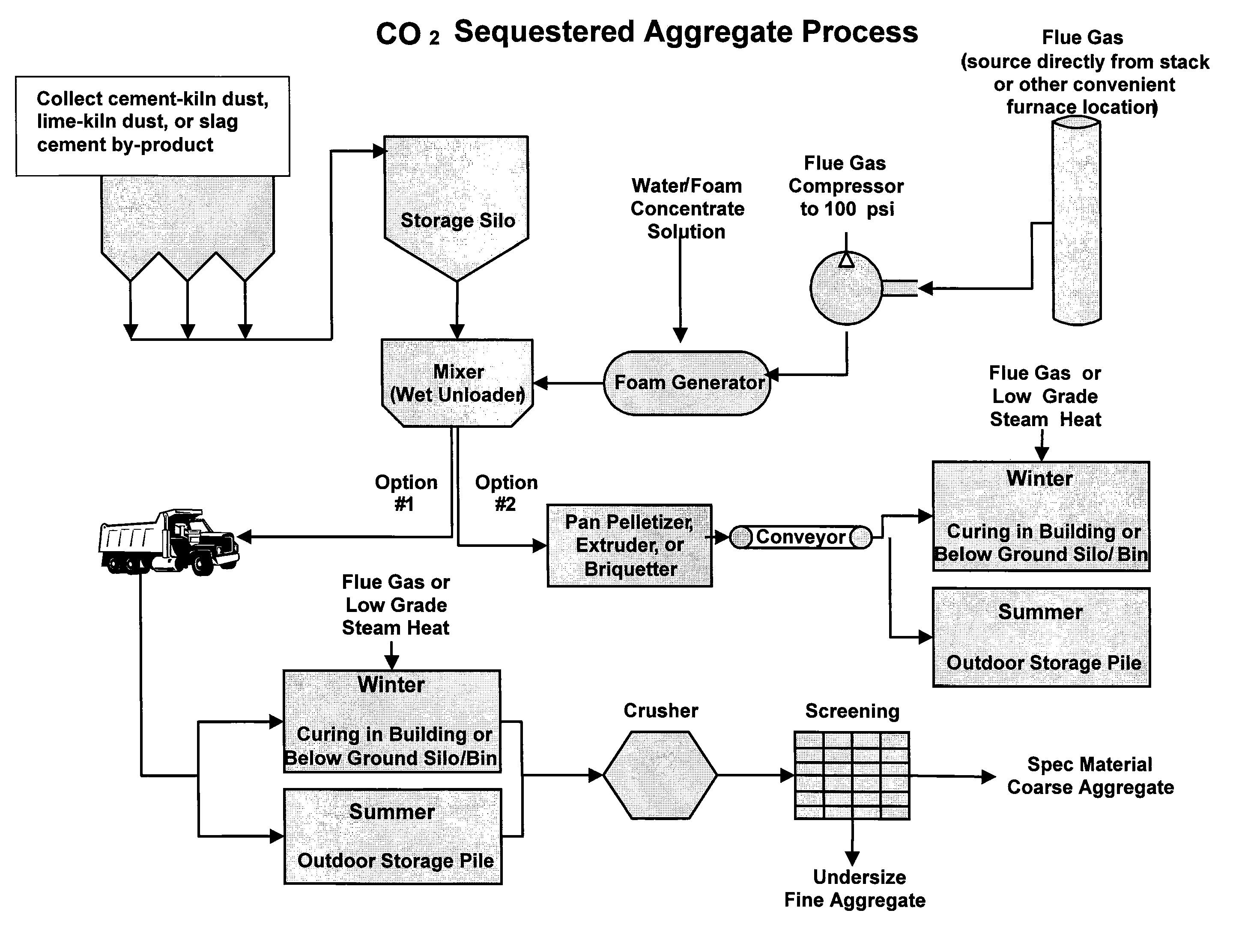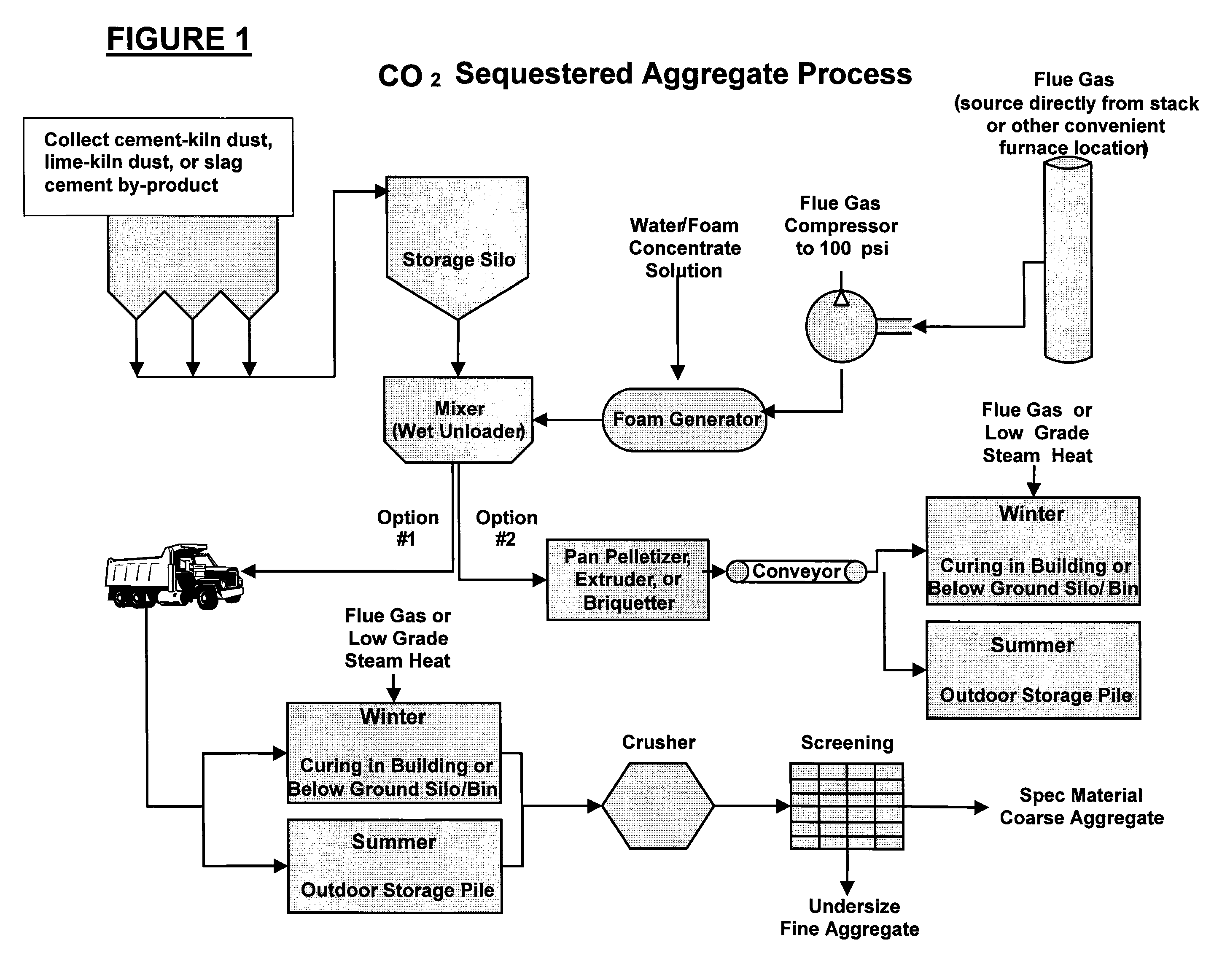Carbon Dioxide Sequestration in Foamed Controlled Low Strength Materials
a low-strength, carbon dioxide-containing technology, applied in the direction of ceramicware, other domestic articles, separation processes, etc., can solve the problems of high energy consumption, difficult maintenance of cement-kiln dust landfills, air quality and environmental pollution,
- Summary
- Abstract
- Description
- Claims
- Application Information
AI Technical Summary
Benefits of technology
Problems solved by technology
Method used
Image
Examples
examples
[0046]The following Examples have been presented in order to further illustrate the invention and are not intended to limit the invention in any way.
1. Experimental Overview
[0047]The experiments detailed below included performance testing and evaluation of foamed controlled low-strength materials (CLSM) produced using a commercial foam generator. The CLSM included mixtures of cement-kiln dust, water, and foam; lime-kiln dust, water, and foam; and slag cement, water, and foam. The CLSM were produced using the foam generator with one of three different types of compressed gases: air, carbon dioxide, and a mixed gas. This mixed gas was used to simulate a typical flue gas generated from the combustion of coal at a typical electric power plant. The experiments explored the feasibility of using flue gas to generate a low-density CLSM with sufficient strength to be used as a lightweight aggregate. It was determined that the use of the flue gas promotes carbonation of the sample thereby inc...
PUM
| Property | Measurement | Unit |
|---|---|---|
| Percent by mass | aaaaa | aaaaa |
| Pressure | aaaaa | aaaaa |
| Mass | aaaaa | aaaaa |
Abstract
Description
Claims
Application Information
 Login to View More
Login to View More - R&D
- Intellectual Property
- Life Sciences
- Materials
- Tech Scout
- Unparalleled Data Quality
- Higher Quality Content
- 60% Fewer Hallucinations
Browse by: Latest US Patents, China's latest patents, Technical Efficacy Thesaurus, Application Domain, Technology Topic, Popular Technical Reports.
© 2025 PatSnap. All rights reserved.Legal|Privacy policy|Modern Slavery Act Transparency Statement|Sitemap|About US| Contact US: help@patsnap.com


